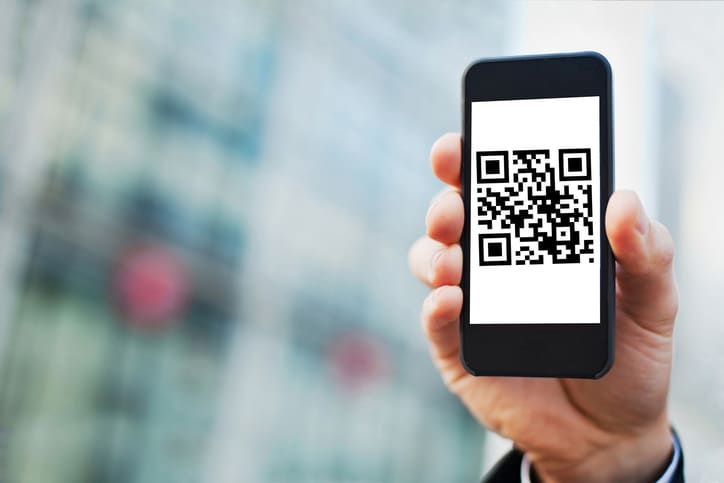Business and institutions are streamlining their processes and modernising how they track, manage, and secure assets. From inventory stock to expensive machinery and IT equipment, businesses need efficient systems to monitor the status, location, and history of their resources. QR codes (Quick Response codes) are an effective tool for streamlining these processes. With the ability to store a variety of data types, QR codes are particularly useful on labels and durable tags for security, stock management, tracking, calibration, and more.
QR codes are two-dimensional barcodes that can store a significant amount of information in a small space. Unlike traditional barcodes, which only store numeric or alphanumeric data, QR codes can encode various types of information, including URLs, text, and even multimedia. QR codes can be scanned using any smartphone or specialised scanners.
Applications of QR Codes on Labels and Tags
Stock Management QR codes have revolutionised inventory management. When placed on labels or tags, they can store essential information such as:
- Product name, SKU (Stock Keeping Unit), and category
- Supplier information and batch numbers
- Current stock levels and reorder details
- Expiry dates for perishable items
Warehouse staff scan the QR code instantly accessing up-to-date information about stock levels, simplifying restocking and auditing processes. Integrating QR codes with inventory management systems also enables automatic updates when stock levels change.
Tracking and Asset Management Whether you’re monitoring shipments in transit or managing assets like machinery and equipment, QR codes are invaluable. They can be used to store:
- Asset ID numbers and descriptions
- Maintenance history and usage logs
- Location data and movement tracking
- Owner or custodian information
By scanning a QR code attached to an item, businesses can see where the item is, its current status, and its complete history using asset-managed databases that track and reduce the risk of loss or theft.
Security and Authentication In environments where security is paramount, such as in laboratories, data centres, or high-value retail, QR codes can offer added layers of protection. These codes can:
- Authenticate products to prevent counterfeiting
- Encode encrypted security keys for access control
- Store user identification or access logs
- Enable secure tracking for sensitive or hazardous materials
QR codes can be combined with tamper-proof labels or reverse printed to greatly improve durability making them even more secure, and ensuring that products or assets haven’t been tampered with, replaced or destroyed due to harsh environments.
Calibration and Maintenance Logs In industries where regular equipment calibration and maintenance are critical, such as in manufacturing, healthcare, or aviation, QR codes offer an efficient way to log and track these activities. QR codes on calibration tags or labels can store:
- Calibration date and the next due date
- Calibration technician’s details
- Reference standards used during calibration
- Full maintenance history, including any repairs or part replacements
When scanned, this information provides technicians with a clear picture of the machine’s history and maintenance needs, helping to ensure compliance with safety standards.
Compliance and Certifications QR codes on durable tags can also be used to manage compliance and certification data, particularly in industries like construction, oil and gas, or manufacturing. These tags can store:
- Certification numbers and dates
- Regulatory compliance information
- Links to digital copies of certificates
- Inspection records
As regulations change, QR codes can be updated with new compliance information, ensuring that assets meet legal requirements without the need for replacing physical documentation.
What Types of Data Can Be Stored in QR Codes?
Here’s a look at the different types of data that can be encoded:
- Text One of the simplest forms of data storage, text within a QR code can include asset descriptions, serial numbers, or instructions for use. Text is ideal for offline applications where internet connectivity is not guaranteed.
- URLs QR codes can store URLs that direct users to web-based databases, manuals, or video tutorials. For instance, scanning a QR code on a piece of equipment might bring up an online portal with detailed usage instructions or an equipment management system.
- Contact Information For tracking assets that are shared across departments, a QR code can store contact details for the responsible person or department, enabling seamless communication in case of issues or queries.
- Wi-Fi Credentials In environments where devices need access to secure networks, QR codes can store and share encrypted Wi-Fi credentials, ensuring that only authorised devices or personnel have network access.
- File Downloads QR codes can link to downloadable files, such as PDF manuals, calibration certificates, or compliance documentation. This reduces the need for physical paperwork and ensures that up-to-date information is readily accessible.
- App Integration QR codes can also be configured to integrate with mobile apps. For example, scanning a QR code on a piece of equipment can open an app that logs maintenance data or tracks its operational hours.
Durability for Harsh Environments
To ensure that QR codes last as long as the assets they’re attached to, especially in demanding environments like industrial plants, construction sites, or outdoor settings, durable labels and tags are essential. Depending on the environment, QR code labels can be made from materials like:
- Vinyl or Polyester: These materials are resistant to water, chemicals, and abrasion, making them ideal for indoor and outdoor use.
- Metal Tags: QR codes can be laser-etched onto metal tags, which are highly resistant to wear, extreme temperatures, and harsh chemicals.
Tamper-Evident Labels: These labels show visible signs of tampering, offering additional security for sensitive or high-value assets.
QR codes are a versatile and scalable solution for asset tracking, stock management, security, and more. Whether applied to product labels, security tags, or calibration equipment, QR codes streamline processes, improve accuracy, and enhance traceability. With this simple yet powerful technology, businesses can reduce operational inefficiencies, safeguard their assets, and ensure compliance with industry regulations.


Recent Comments